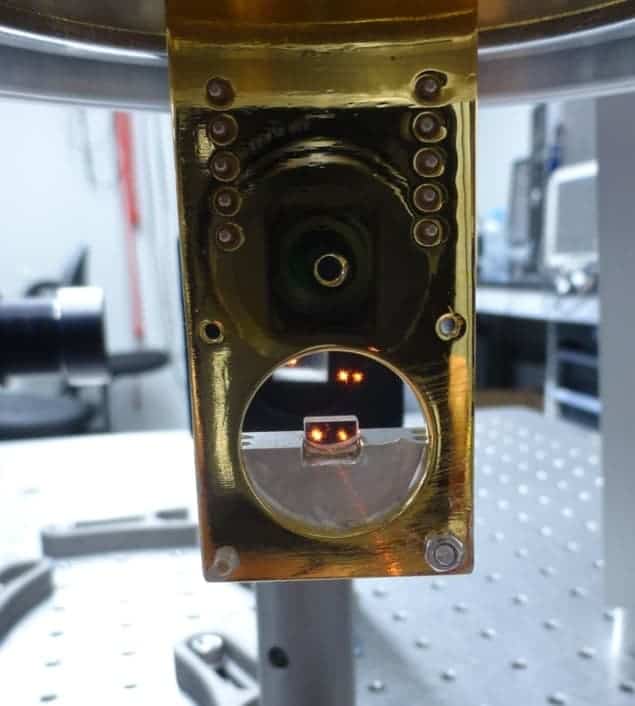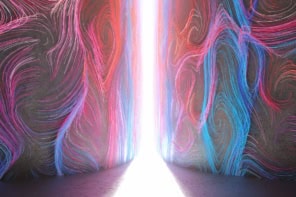
Three independent teams of physicists have created the first solid-state quantum memories that store the polarization states of photons. While the three systems each use different materials, they are all based on the concept of an “atomic comb” – whereby a photon is stored in a collective excitation of the atoms within the solid.
Photons have proved to be a good choice for transmitting quantum bits (qubits) of information because they can travel for long distances without interacting with their surroundings. Their other advantage is that quantum information can be stored in a photon’s polarization state, with “1” represented by horizontal polarization and “0” by vertical, for example.
Unfortunately, it is very hard to make a quantum memory that can store photon qubits, which has been bad news for anyone wishing to make a quantum computer or build “quantum repeaters” that allow quantum information to be transmitted over long distances. Physicists have been able to create solid-state memories that can store and re-emit qubits based on the temporal properties of light – “1” for the presence of a photon and “0” for its absence, for example – but not the photon’s polarization itself.
One problem is that many solids tend to cause bifringence – a refractive effect that sends light of different polarizations along different paths. The other snag is that the degree to which many solid materials absorb light depends on the polarization of the light. The bottom line is that it is very difficult to make a device that stores a qubit with an arbitrary polarization.
Triple pronged
To get round this problem, the three groups took surprisingly simple approaches. Two teams – one led by Chuan-Feng Li at the University of Science and Technology of China in Hefei and the other by Mikael Afzelius at the University of Geneva – made their memories from two crystals of the same material that are rotated by 90 degrees to each other.
Meanwhile at the Institute of Photonic Sciences in Barcelona, Spain, Hugues de Riedmatten and co-workers used one crystal but split the incoming light into two separate beams, one of which has its polarization rotated by 90 degrees. The two beams are then sent through the crystal, and the emerging rotated beam is then rotated back to its original polarization before the two beams are recombined.
In all three cases, the basic idea is the same – by rotating one crystal or beam polarization by 90 degrees, the problems of bifringence and directional absorption are effectively eliminated. Quantum information is stored in each case in an “atomic frequency comb” (AFC) – a phenomenon first identified in 2009 at the University of Geneva by a team that included Afzelius and De Riedmatten. An AFC is a collective excitation of atoms in a crystal that includes a large number of frequency modes that are equally spaced in energy, like the teeth on a comb.
Drifting out of phase
The storage process begins when the photon is absorbed and excites the AFC modes. The modes then evolve in time such that they drift out of phase with each other. While this occurs, the AFC is unable to re-emit the photon. However, after a fixed amount of time – typically tens or hundreds of nanoseconds depending on the material – the comb modes are back in phase with each other and the photon is re-emitted with the same polarization as the absorbed photon.
The Geneva and Barcelona groups used yttrium-orthosilicate crystals that were doped with neodymium and praseodymium, respectively, while the Hefei team used yttrium-orthovanadate crystals doped with neodymium.
All three teams are currently trying to improve their devices. Li told physicsworld.com that the Hefei team is working on how to store multi-photon polarization entanglement in several different quantum memories. Afzelius’ team is investigating how the storage time can be extended to millisecond or even second timescales by using different materials, which is important given that storage times of seconds are needed for practical quantum repeaters. Meanwhile in Barcelona, De Riedmatten and colleagues are looking at how the AFC excitation can be transferred to a spin excitation in the solid – a process that they believe could be used to boost the storage time to a few seconds.
The research is described in three papers in Physical Review Letters.



